Hatsukokoro
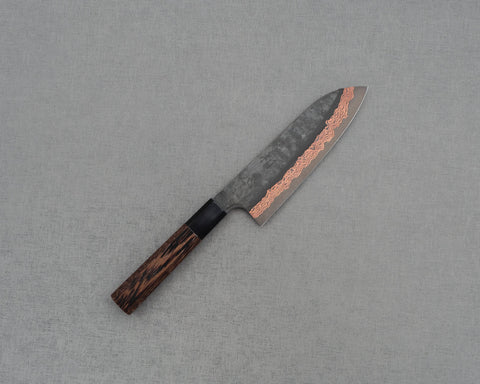
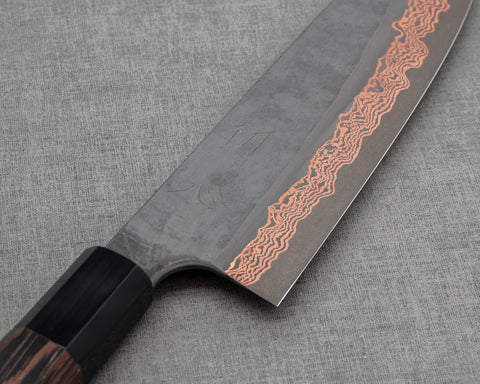
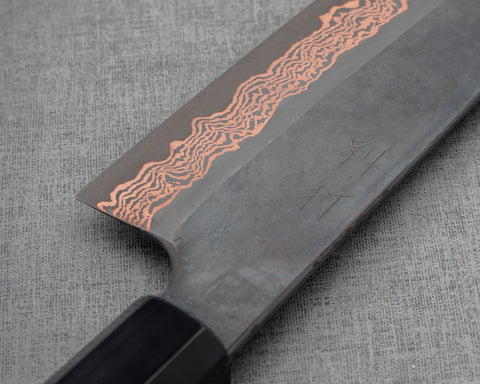
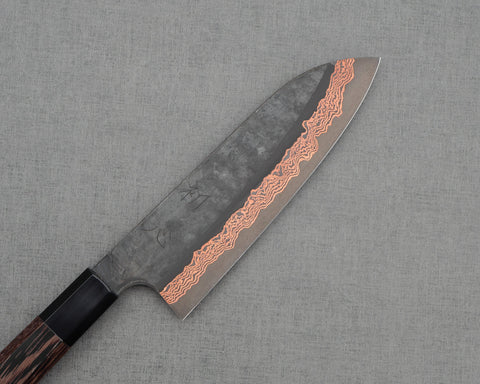
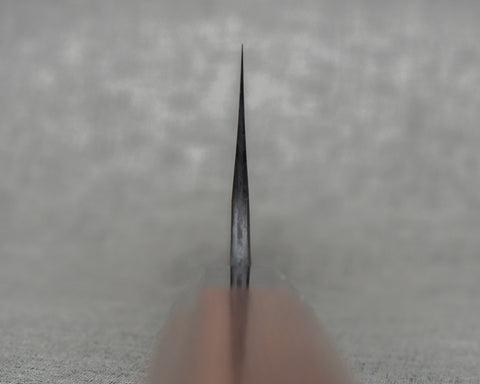
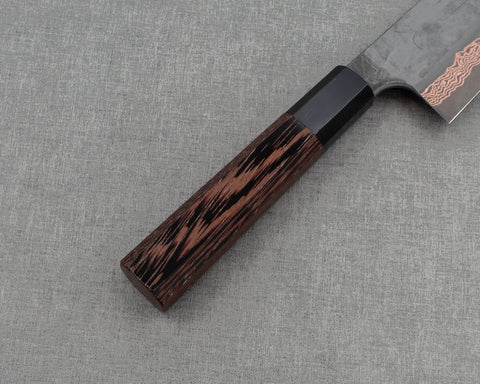
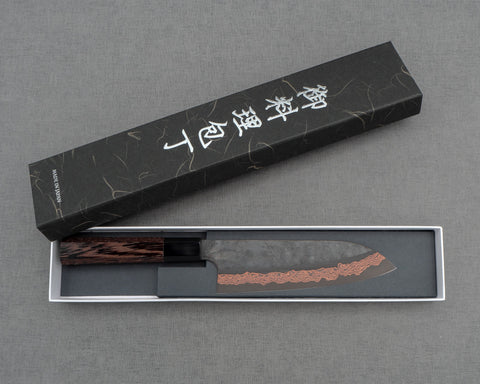
Hatsukokoro / Nigara SKD11 Kurosome Colored Damascus 165mm Santoku
目前沒有提供取貨服務
Hatsukokoro has taken a further step from its previous version by adopting Kurosome finishing to fully darken the blade, resulting in a rare-to-be-found black blade. The fit-and-finish is distinctively Nigara style, with a gradual taper from heel to edge and weighing about 20% more than other Santoku knives from the brand.
Spec:
- Origin (Made in): Hirosaki, Aomori Prefecture, Japan
- Brand: Nigara Hamono
- Knife Type: Santoku
- Blade
- Construction: San Mai
- Grind: Double-edged Blade (50/50 Grind)
- Hagane (Core Steel): SKD11 (Semi Stainless)
- Jigane (Cladding): Stainless Steel
- Hardness: 64 HRC
- Hand-forged, hand-grinded, hand-sharpened
- Blade Finishes:
- Kurosome
- Colored Damascus
- Blade Length: 165mm (6.5")
- Blade Height (at heel): 50mm
- Spine Thickness
- Above heel: 3.8mm
- Middle: 2.4mm
- Handle
- Shape: Hachikaku (Octagonal)
- Material: Wenge
- Kuchiwa: Black Buffalo Horn
- Length: 127mm
- Overall Length: 310mm
- Weight: 161g (5.68oz)
- Engraved Mark (Front):
- In Japanese Kanji "Hatsukokoro" (初心)
- Engraved Mark (Back): In Japanese Kanji "Meticulously crafted" (別打)
About Nigara Hamono 二唐刃物
With 350 years of history, starting from making swords for Tsugaru clan in the early Edo period, Nigara Hamono has passed down knowhow and skills for eight generations. Its 5th generation blacksmith Kunitoshi Nigara was a legendary sword maker, earning a long list of accolades, honorary titles and knighthood. The current (8th) generation blacksmith — Tsuyoshi Yoshizawa is supported by his father Toshiju Yoshizawa who has keen interests in art and music. Nigara’s famous Anmon design is the result of Toshiju’s love for Andy Warhol’s artworks. The family business’ expansion into construction steelworks has given Nigara unmatched access to in-house knowhow when it comes to advanced finishing. All these set Nigara apart as one of the most special knife makers in Japan.
Care:
SKD11 Steel is a semi-stainless steel. With general use, the knife is unlikely to develop patina or rust. However, as the chromium content of SKD11 is comparatively lower than stainless steels, patina or rust may develop under certain conditions such as prolonged exposure to water. The cladding of the knife is fully stainless therefore if patina or rust is to develop at all, it will be localized on the exposed core steel near the cutting edge. Wash and dry with a soft sponge, and safely store after use. Avoid cutting into bones, frozen foods, hard fruit pits.
Cutting Surface:
Recommended cutting surface: wood, rubberized boards and high-end composites, and quality plastics such as polyethene make acceptable cutting surfaces, and will help protect and prolong knife’s edge. AVOID glass, metal, countertops, and other rigid, non-forgiving surfaces.
Sharpening:
We recommend sharpening all quality Japanese knives on whetstones, as we believe they yield the best results for your knives.
Exquiste Colour Damascus high carbon steel, razor sharp..sold out, worth the wait, my prized knife in my drawer
